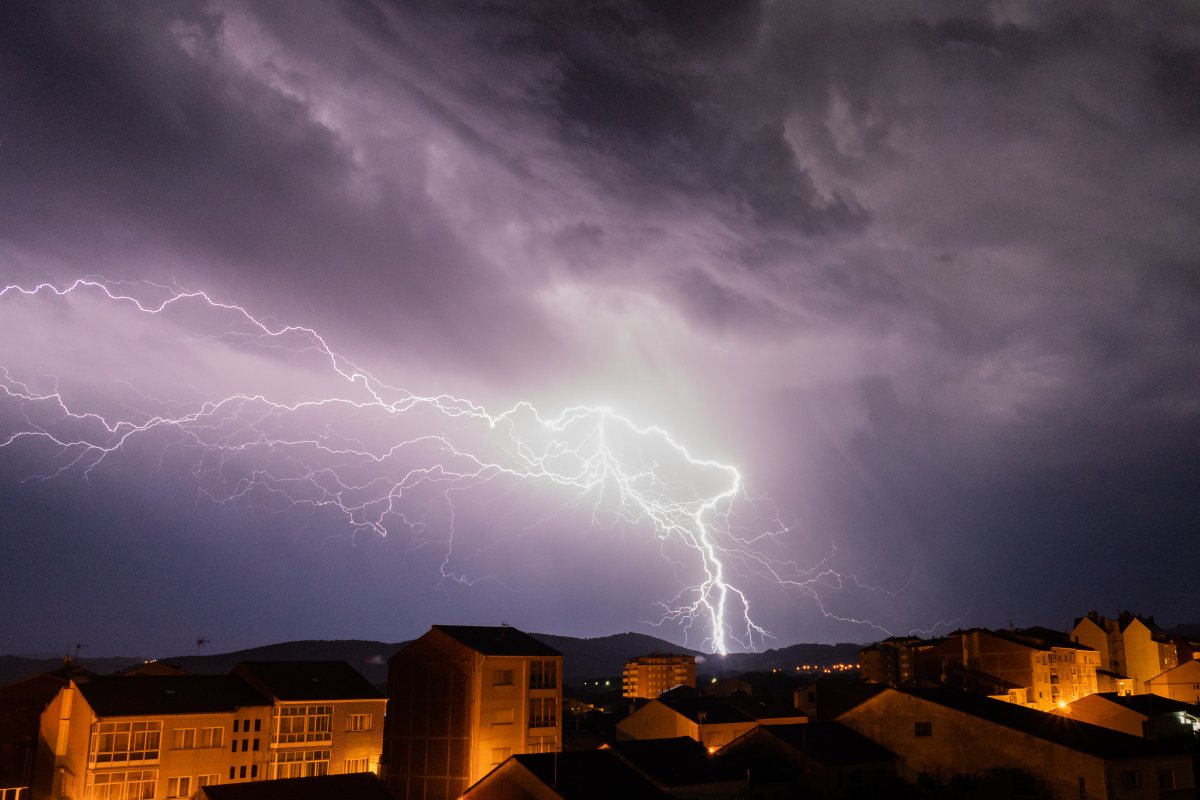Summer time is thunderstorm time in Germany, with strong thunderstorm fronts occurring due to persistently high temperatures. This is a phenomenon that is likely to intensify as a result of man-made climate change, as extreme weather becomes more prevalent with rising temperatures. Scientists are now using new technology in space to recognize storms more quickly and warn people in affected regions. The European Space Agency (ESA) and the European Organization for the Exploitation of Meteorological Satellites (Eumetsat) recently released animations of the “Lightning Imager” on board the latest Meteosat-12 satellite. This instrument, developed by Italian aerospace company Leonardo, contains four cameras aimed at Europe, Africa, the Middle East, and parts of South America. It can detect lightning flashes shorter than a blink, recording up to 1,000 frames per second from 36,000 kilometers away. Meteosat-12 is the first of six third-generation satellites, and along with the “Lightning Imager,” it contains other instruments to observe weather and atmospheric changes closely.
The animations recently presented by Eumetsat feature recordings of different regions over one-minute intervals combined with current satellite images of the Earth. This data, however, has a “lower sensitivity setting” due to ongoing instrument calibration. The goal is for the instrument to go into operation by 2024 and provide real-time data to weather services. The monitoring of lightning activities in severe thunderstorms allows meteorologists to better predict the strength of storms and thunderstorms. These recordings obtained from the lightning imager could also be used for long-term research on climate change. The high-resolution photos, which generate a significant amount of data at a rate of 1,000 per second, are processed on board the satellite using artificial intelligence (AI). Algorithms compress the data by a factor of 1,000 and only transmit relevant information to Earth. Through machine learning, the system selects the recordings that show actual lightning activity.
The idea of observing storms and lightning from space is not entirely new. The US weather satellite GOES-16, launched in 2016, has instruments designed to observe lightning activity, and its data is used in projects such as LightningCast, where it is also processed with the help of AI. However, according to Eumetsat, the new “Lightning Imager” on Meteosat is expected to provide even higher resolution images. The need to monitor storms is becoming increasingly important due to the predicted increase in extreme weather events in the future. The German Weather Service anticipates more storms, extreme rainfall, and heatwaves, while researchers from Austria have found that lightning activity in the higher alpine regions has nearly doubled in the past 40 years. This trend aligns with global changes in the climate system, according to the researchers.


